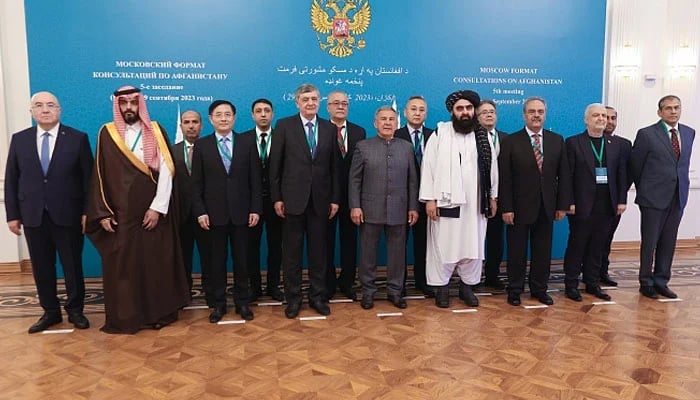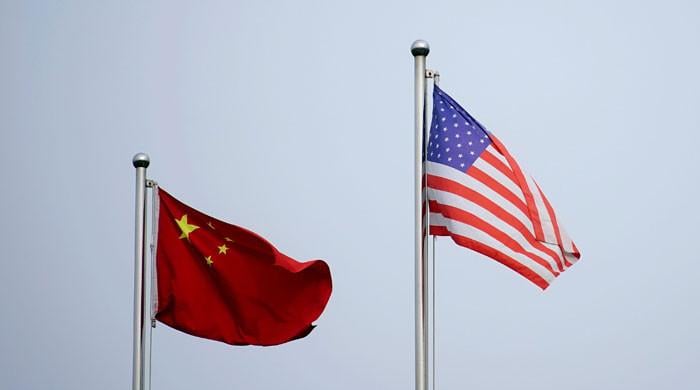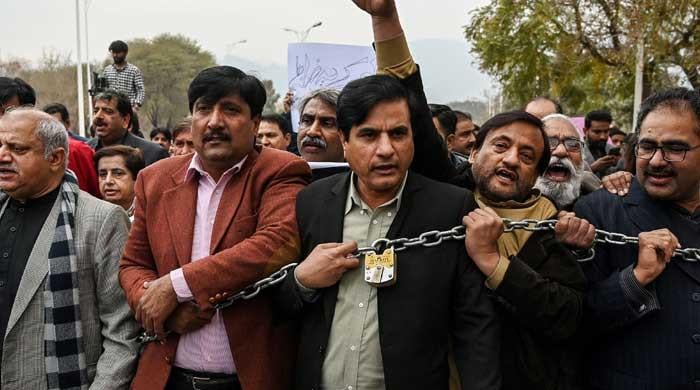Why Iran proposed anti-US contact group?
During Moscow Format meeting, Iran proposed the formation of a regional contact group against the US
October 05, 2023

During the Moscow Format meeting, Iran proposed the formation of a regional contact group against the United States of America.
Hassan Kazemi Qomi, the Iranian president’s special envoy for Afghanistan said: "The cooperation and consensus of the participants in the Moscow Format were on preventing the re-entry of the United States and paving attention to holding it to account for the damages it inflicted after 20 years of occupation."
The question is why Iran wants an anti-US contact group in the region, and why it is using the Moscow Format, designed to address Afghan issues, for this purpose?
Like all other countries, Iran has not accepted the Taliban government but has shown a soft approach towards accepting the new realities of the region. It has sent Qomi as an ambassador who attended the fifth round of Moscow Format in Kazan.
In reality, post-US withdrawal, Afghanistan has witnessed a change in the Iran-Afghanistan relationship. In the last two years, only a few small irritants emerged which were duly settled.
Geographically, Afghanistan shares a more than 920-kilometer-long border with Iran. Yet, people of both countries also share history, religion, culture, and language.
Historically, the 1978 coup against Afghan President Muhammad Daoud almost coincided with the 1979 revolution against the Shah of Iran. Then, Kabul was aligned with Moscow while Reza Shah Pahlavi had enjoyed the backing of the United States of America.
Till his last days, Shah had encouraged Daoud to reduce Soviet influence. Yet, much has changed since both rulers are buried in the history books. Ironically, Tehran is now closer to Moscow while the Taliban enjoy ties with the United States of America.
The new development in Kabul has caused some serious concerns as well. President of Iran Ebrahim Raisi says, "America’s military defeat must become an opportunity to restore life, security, and durable peace in Afghanistan."
For Iran, this peace is necessary to maintain border security, stop drug smuggling, and a new influx of refugees. At the same time, it is needed to settle water issues and promote trade and investment.
Border security
Since 2015, Iran faced a serious threat of al Qaeda and Daesh on its eastern border with Afghanistan. Relations with the Taliban must be viewed in that context as well.
In 2022, two border incidents had sparked tension between the two neighbours. On July 3, 2022, a gun battle between Iranian border guards and the Taliban resulted in the death of an Afghan.
This skirmish in Nimroz province in Afghanistan which connects Hirmand in Iran, had followed a similar incident in the same area a month ago. That incident also caused the death of an Iranian border guard.
Some media reports claim that the fight started when the Taliban attempted to raise their flag on non-Afghan areas close to Sistan-Baluchistan province.
Both countries share a chequered history of violence. During Taliban’s previous rule, 10 Iranian diplomats were killed in Mazar e Sharif when a group stormed the Iranian consulate in the city. With such background, the recent border skirmishes have the potential to reignite tensions buried in the past.
Border crossings
The neighbours share a number of border crossings including Islam Qala and Abu Nasr Farahi but the most important one is Zaranj in the Iranian Balochistan area. This crossing not only serves as a trade route but is equally used by Afghan refugees to enter Iran.
Before the Taliban took over Kabul on August 15, 2021, there were almost 3 million Afghan refugees in Iran alone. In the last two years, almost 2 million Afghan refugees have returned to their homeland from different countries.
Out of almost one million refugees currently staying in Iran, 43% are Hazaras. This socially liberal and religiously conservative ethnic minority of Afghanistan has long enjoyed the backing of Iran.
Though some Afghan refugees have returned to their homeland but is an admitted fact that many others who are well-settled have no intention of uprooting themselves in their newfound land.
Moreover, some refugees who returned to Afghanistan have found only one ethnic group dominating every sector. They lament having no means to restart lives and allege intimidation. Hence, they are trying to come back to Pakistan and Iran.
However, Afghanistan’s neighbours who are already facing a new wave of violence, fear that Daesh militants may sneak in the guise of refugees.
Keeping that in mind, Iran’s Ambassador to Kabul stressed that, "While appreciating the caretaker (Taliban) government’s actions in confronting the ISIL terrorist group and efforts to improve the economic situation, I emphasized the need to respond to the concerns of the people of Afghanistan and neigbhouring countries."
Mashhad Shura
Before the Taliban took over Kabul, they had established close ties in the region. In some neighbouring countries, they had set up governing structures named shuras.
The alleged Mashhad Shura was reportedly established in 2007 as a liaison between the Taliban and the Islamic Revolutionary Guard Corps of Iran. Later, it emerged as a regional command center for their actions in Afghanistan.
With the help of Mashhad Shura, the Taliban strategically placed themselves in much better positions in Nimruz, Farah, Herat, and Badghis provinces.
Like Moscow and Beijing, Tehran also hosted the Taliban in November 2019 and continues to have contacts with the interim government.
Case of Mullah Akhtar Mansoor
In 2016, Iranian personnel had reportedly met Taliban leader Mullah Akhtar Mansoor to warn him of any alliance with Daesh. For Tehran, Daesh is a terrorist organisation that serves in Afghanistan and the Middle East as a "protégé of the pentagon".
The meeting had taken place almost a year after Mullah Akhtar Mansoor assumed the leadership of Taliban movement in July, 2015, after the sudden announcement of the death of its founder and spiritual leader Mullah Omar who had actually passed away quietly in April, 2013.
It was a strange development that after the meeting, Mansoor was assassinated in May, 2016, by a US drone strike in south-west Pakistan near the Afghan border.
Economy at work
Iran is the top exporter to Afghanistan. In 2020-2021, Iranian exports touched $2.3 billion mark. And last year, according to Iran-Afghanistan Joint Chamber of Commerce, trade exchange between the two countries increased by 25%.
Afghanistan has also served as a gateway to export heavily sanctioned Iranian commodities.
With that background, Iran wants stability and continued progress in both border security and economic stability. This is something shared by Russia and China as well.
Though, all Moscow Format members will highly unlikely make anti-US contact group. However, this idea will surely keep growing in Beijing and Moscow. At the same time, it will serve Iranian conservatives, domestically well.











